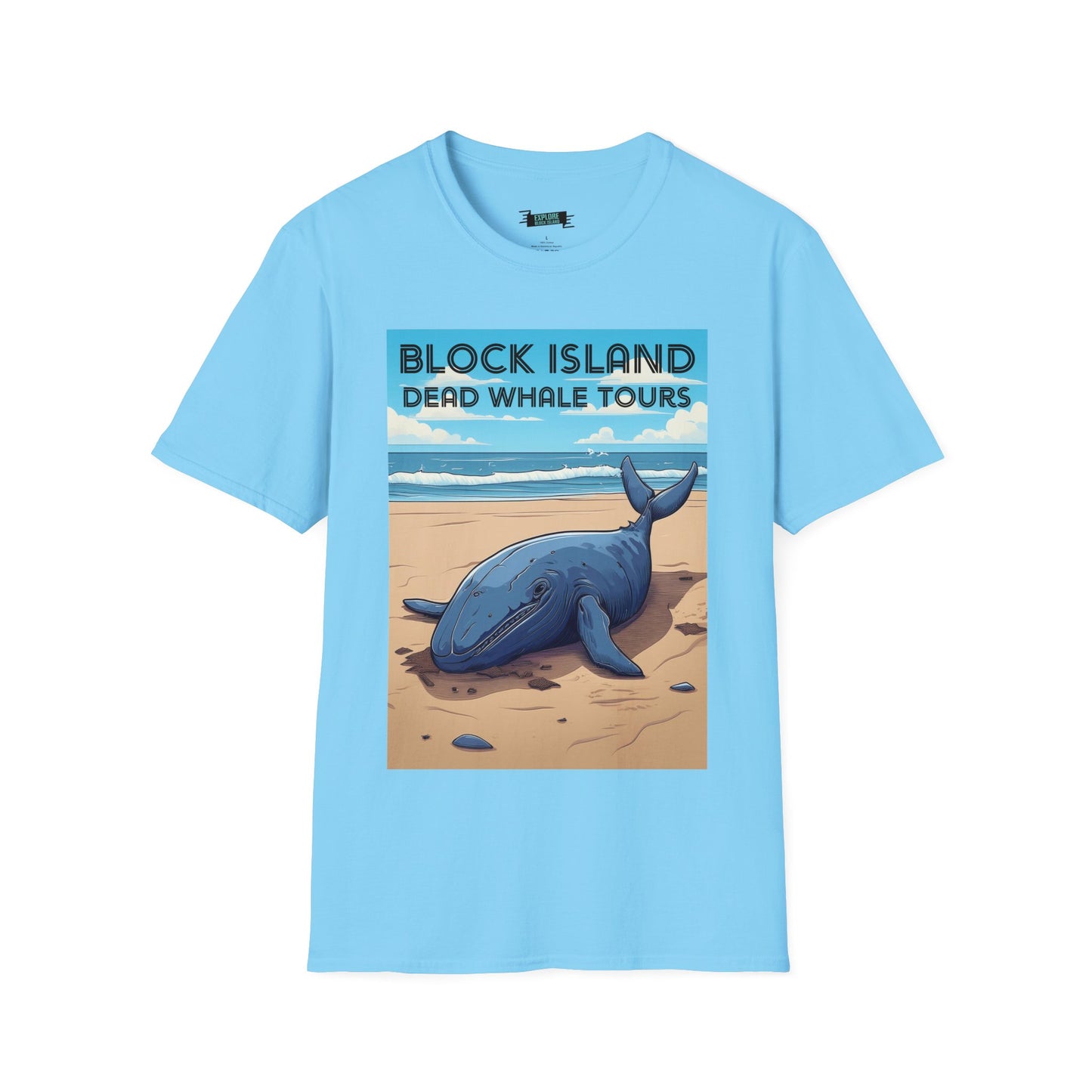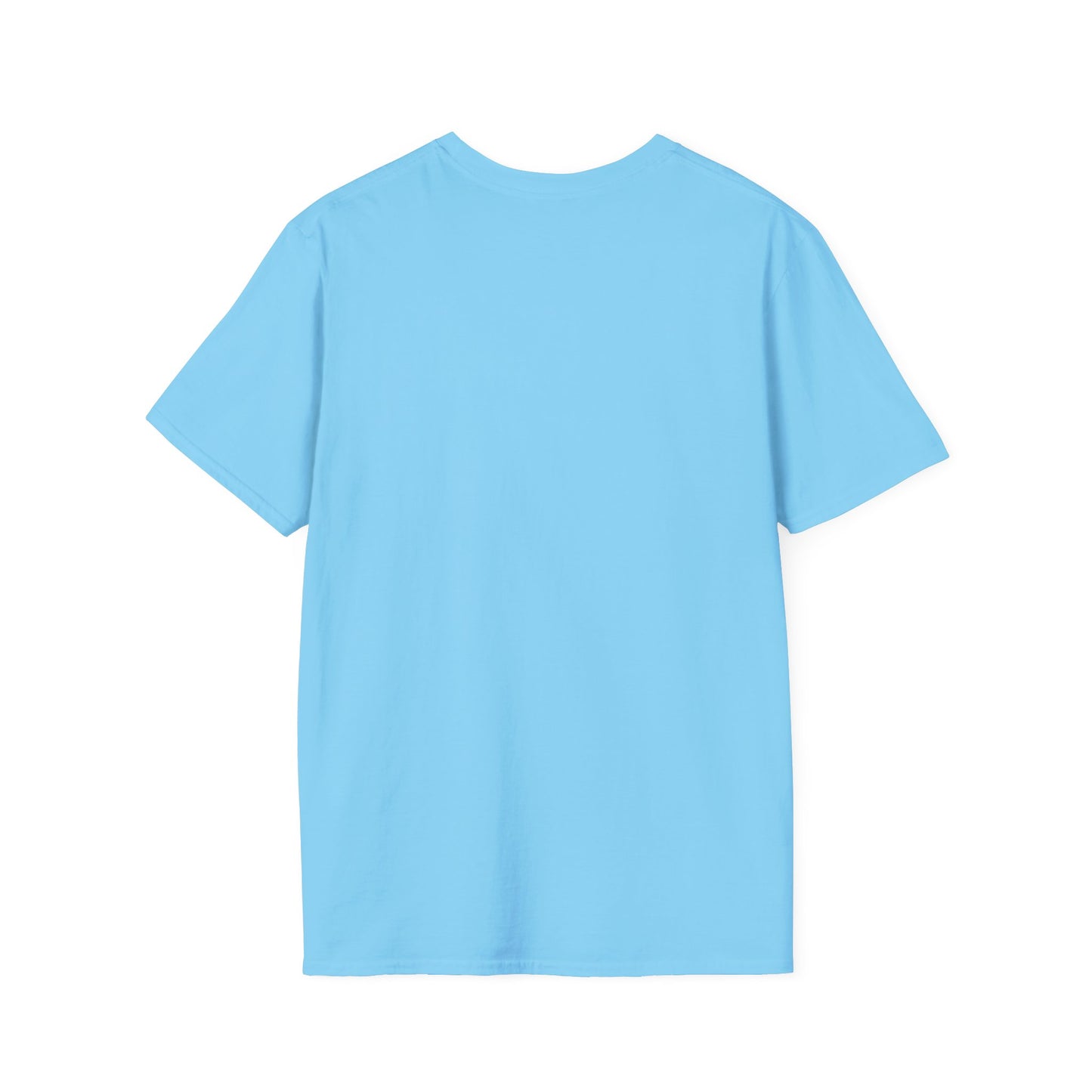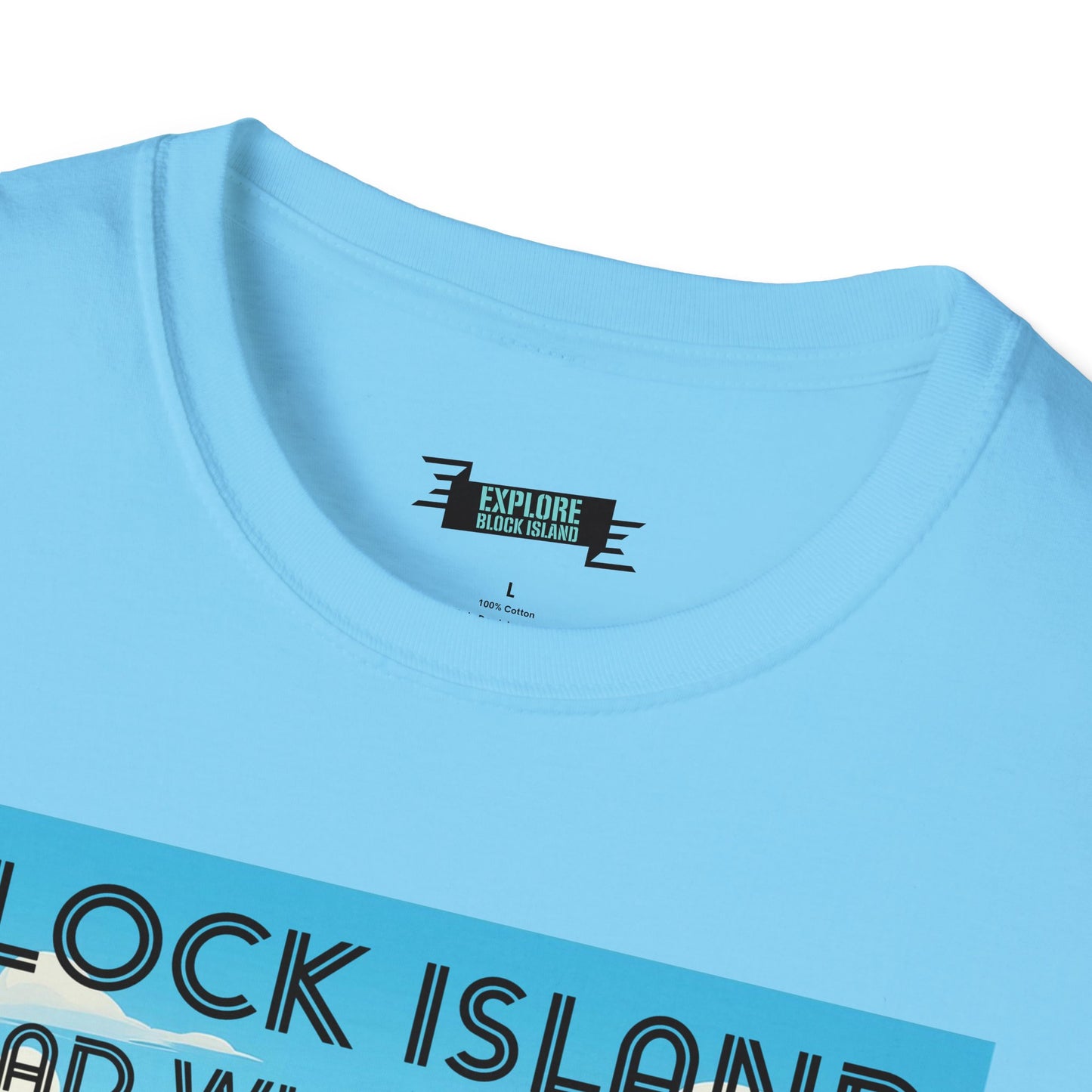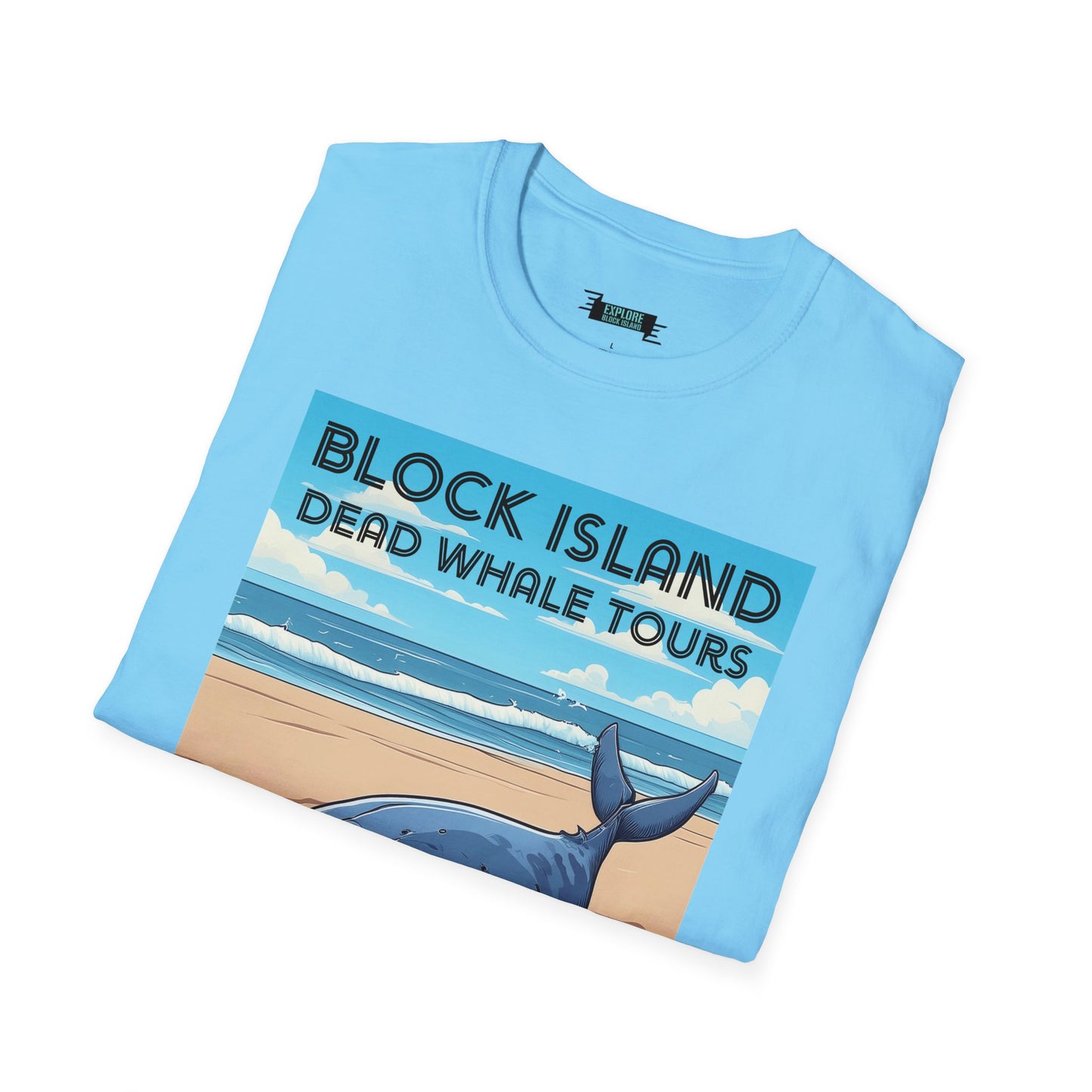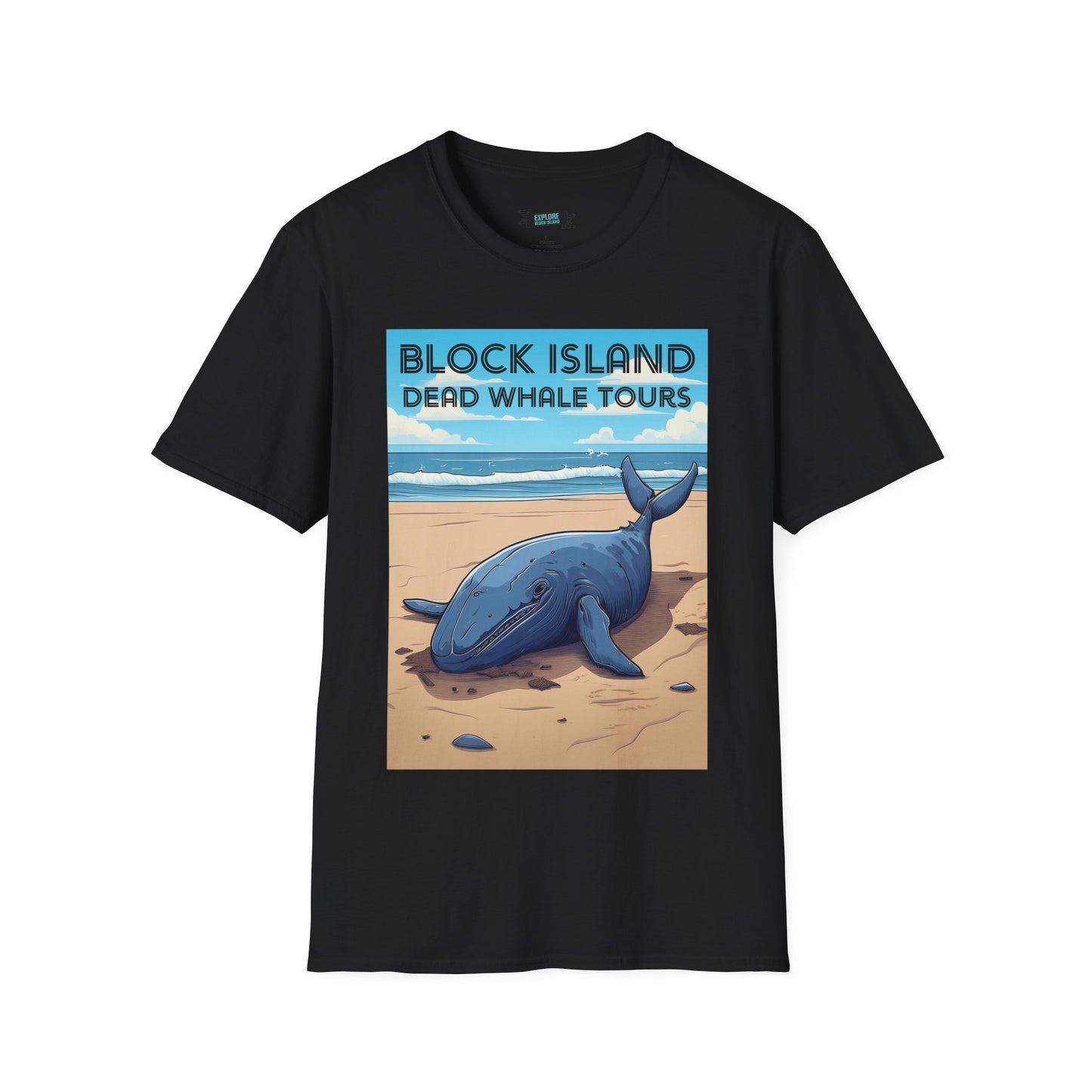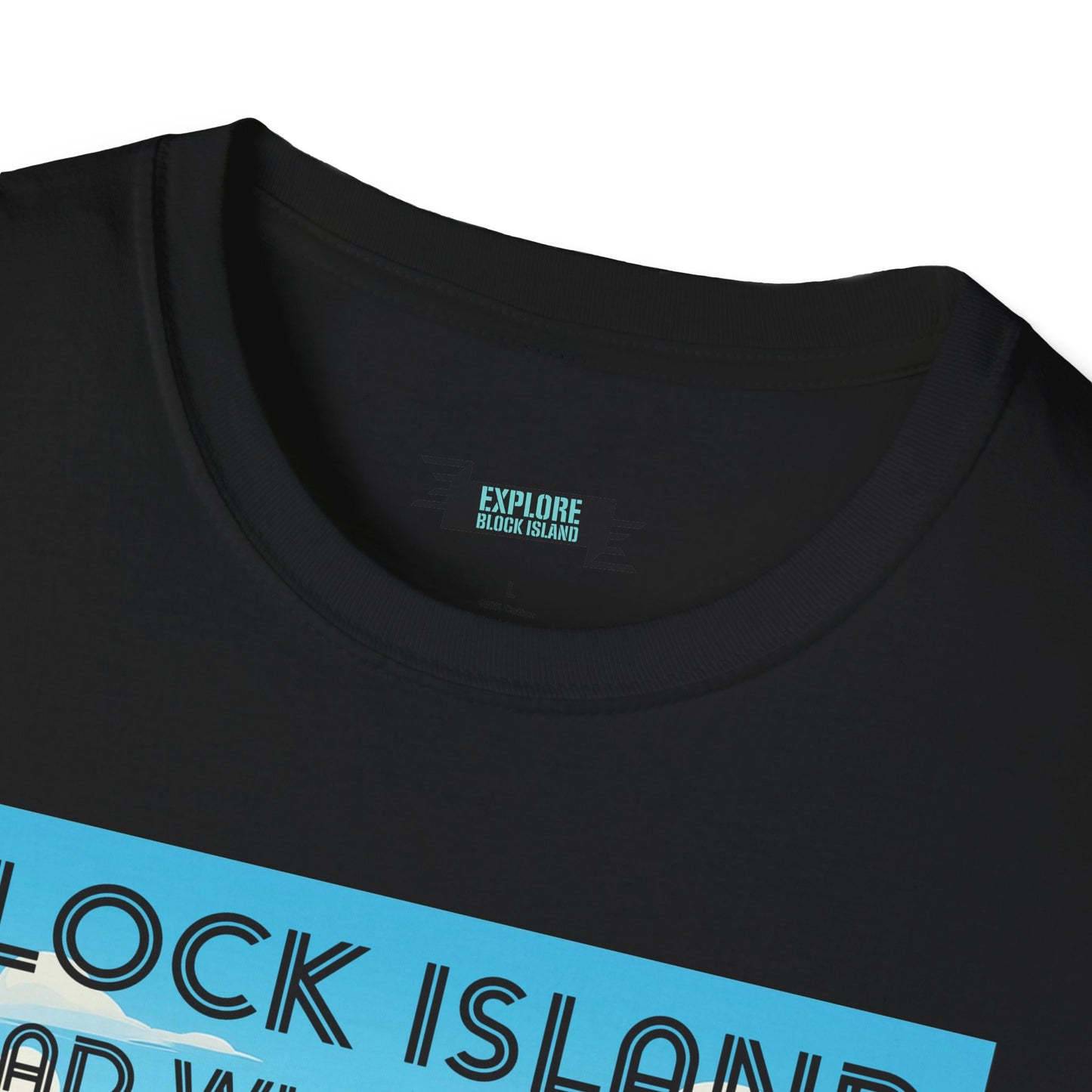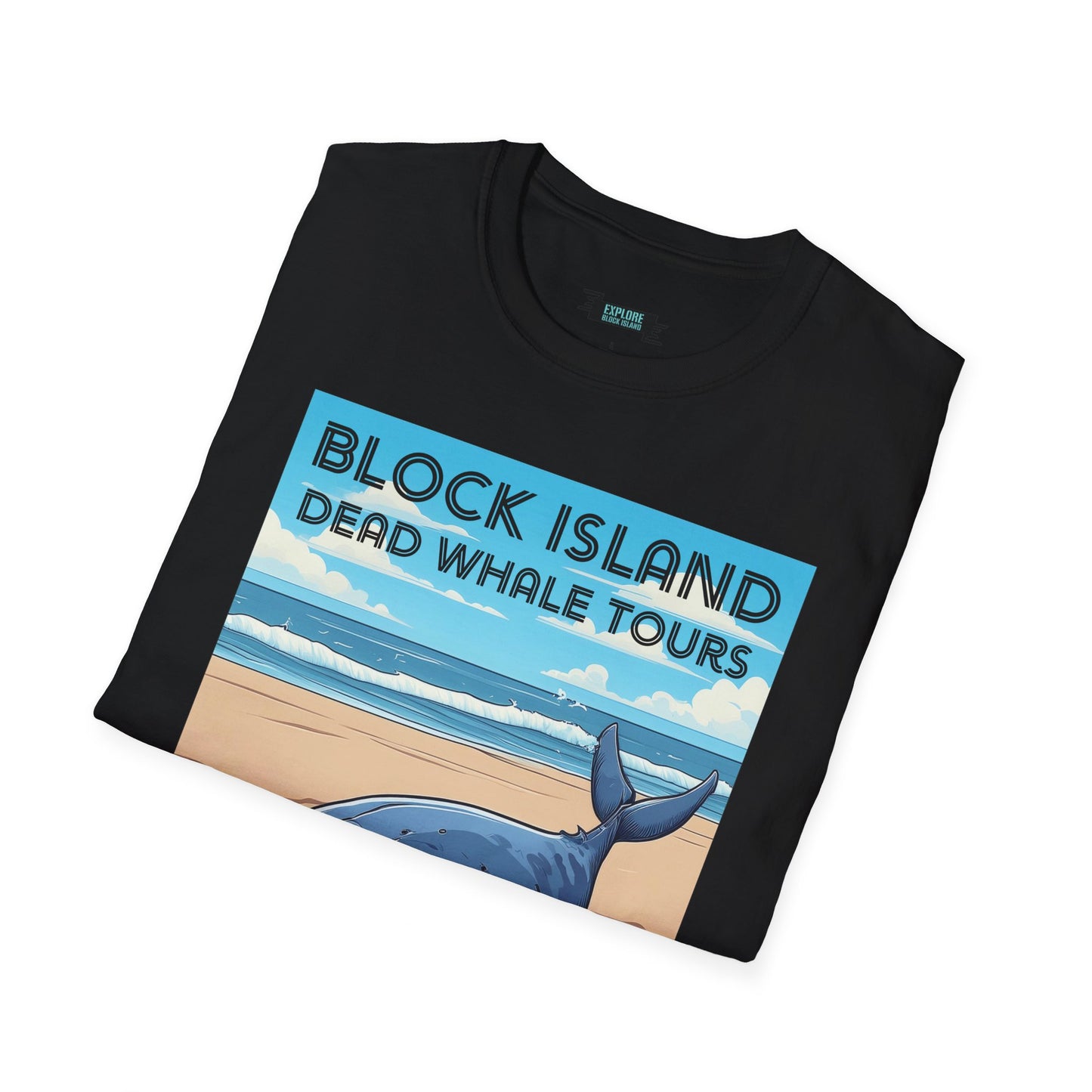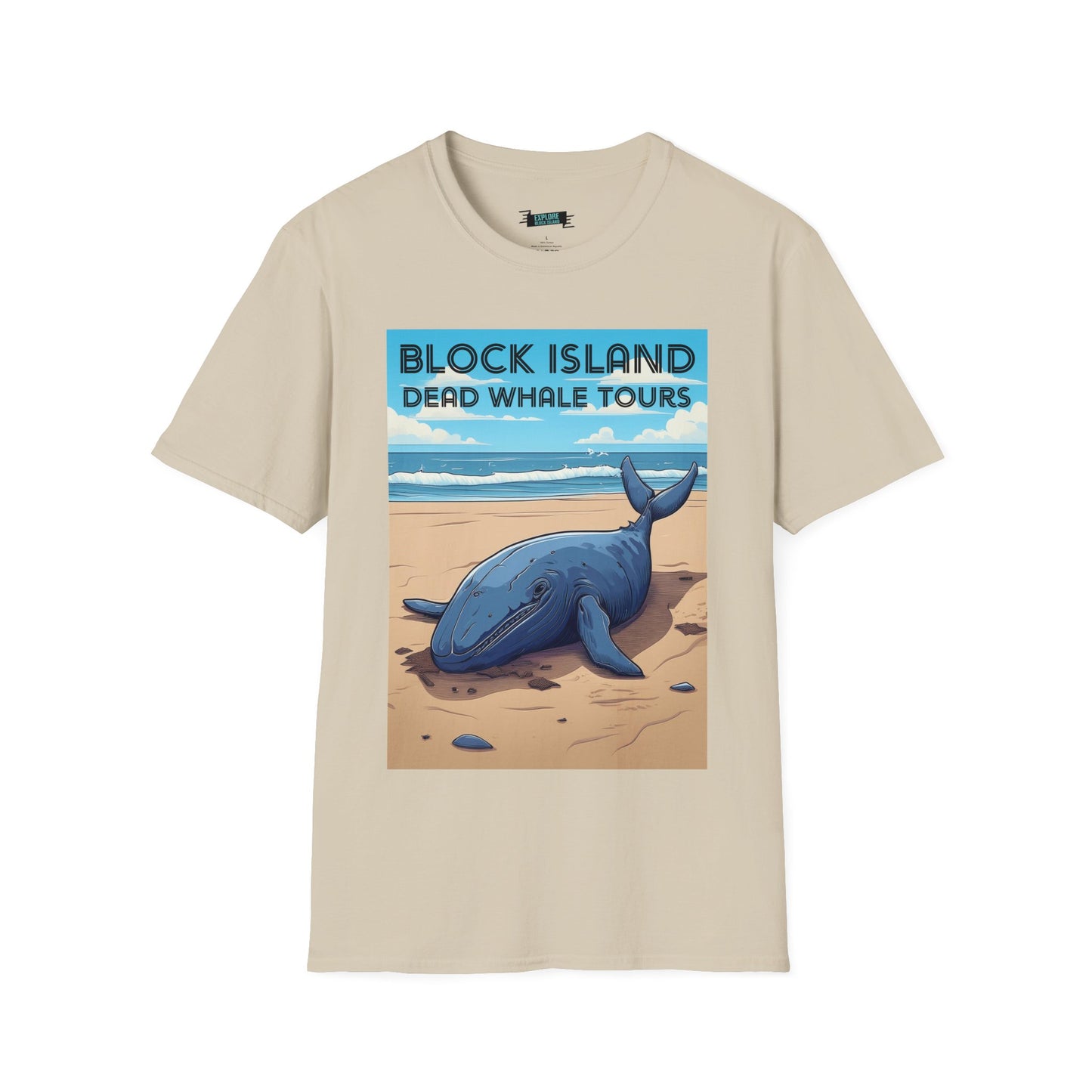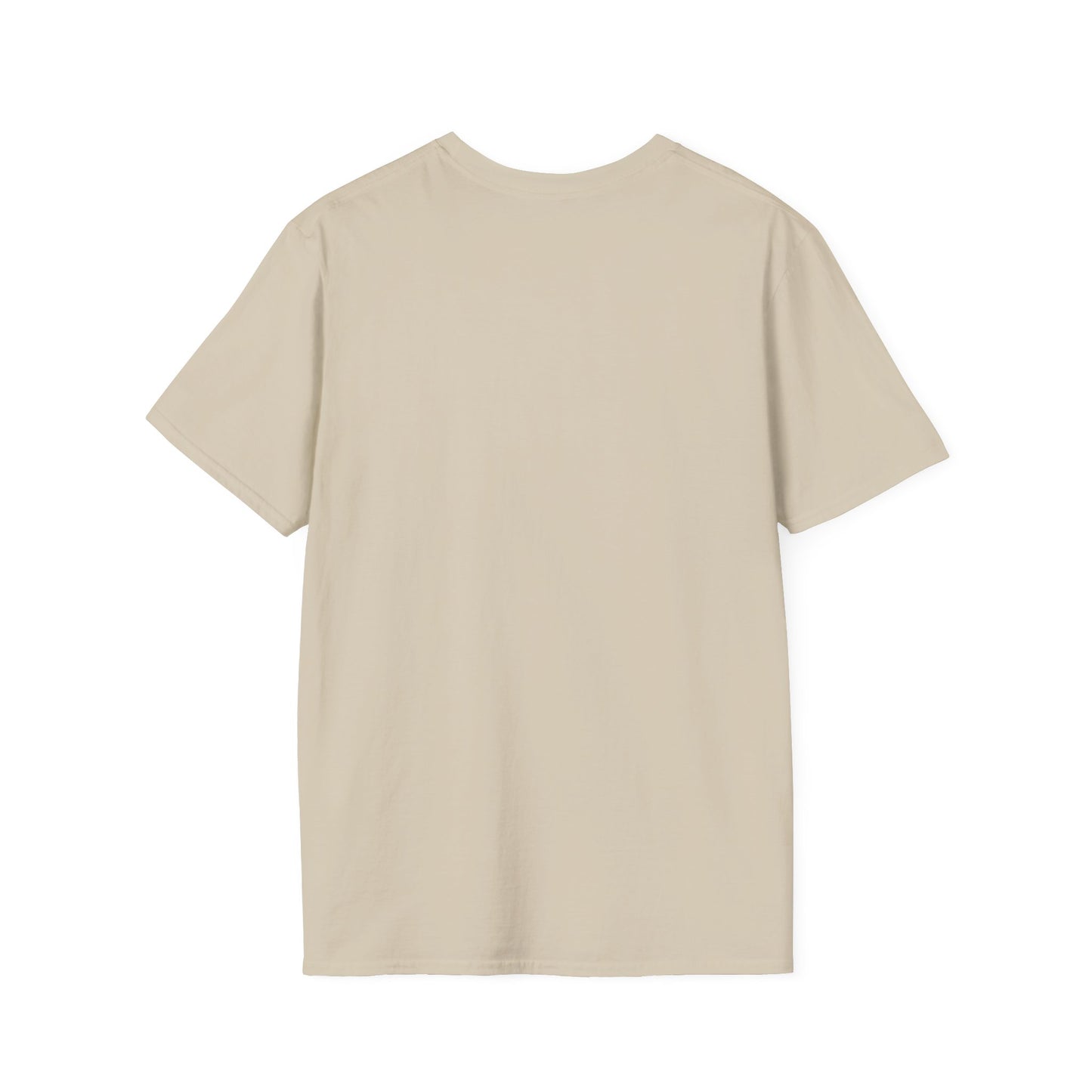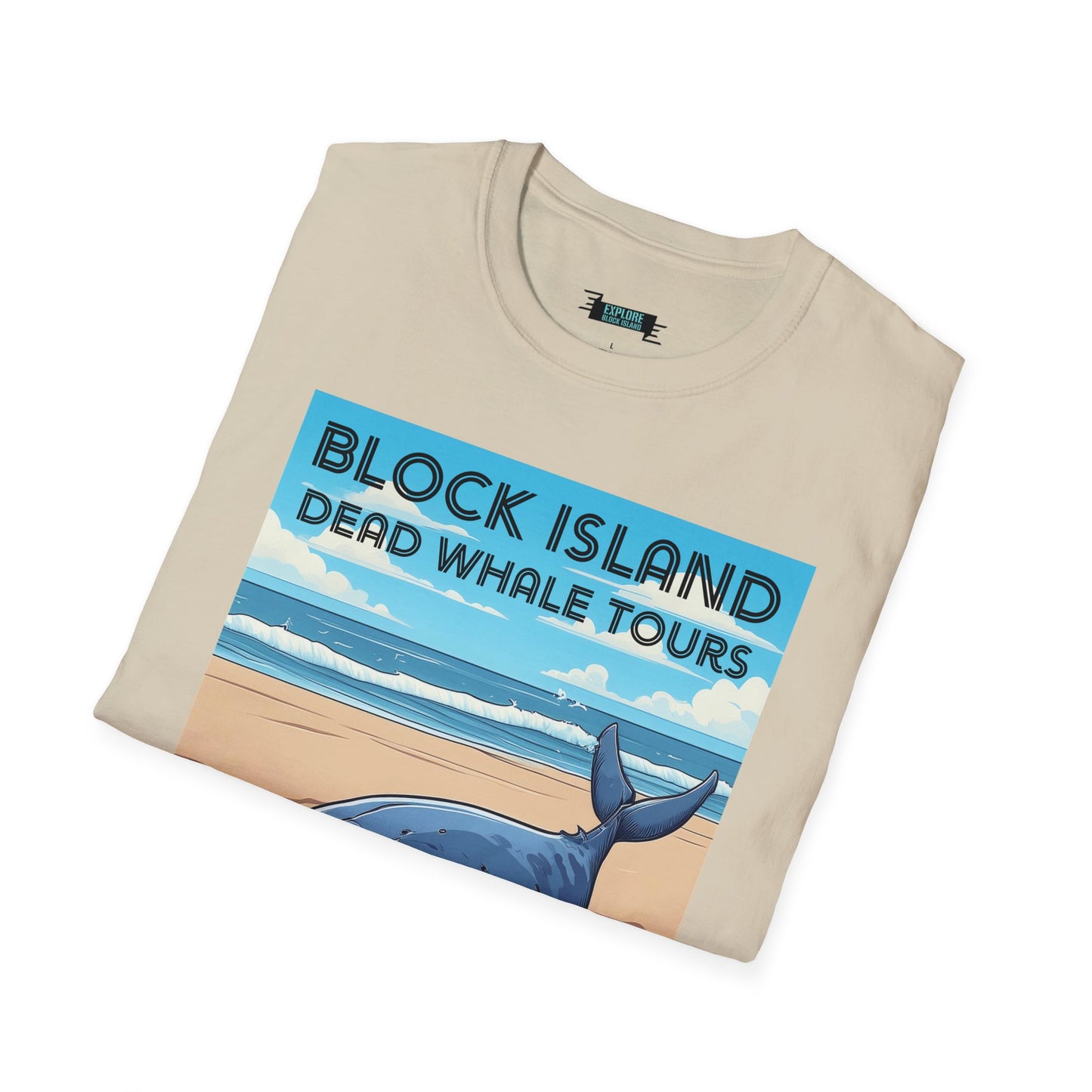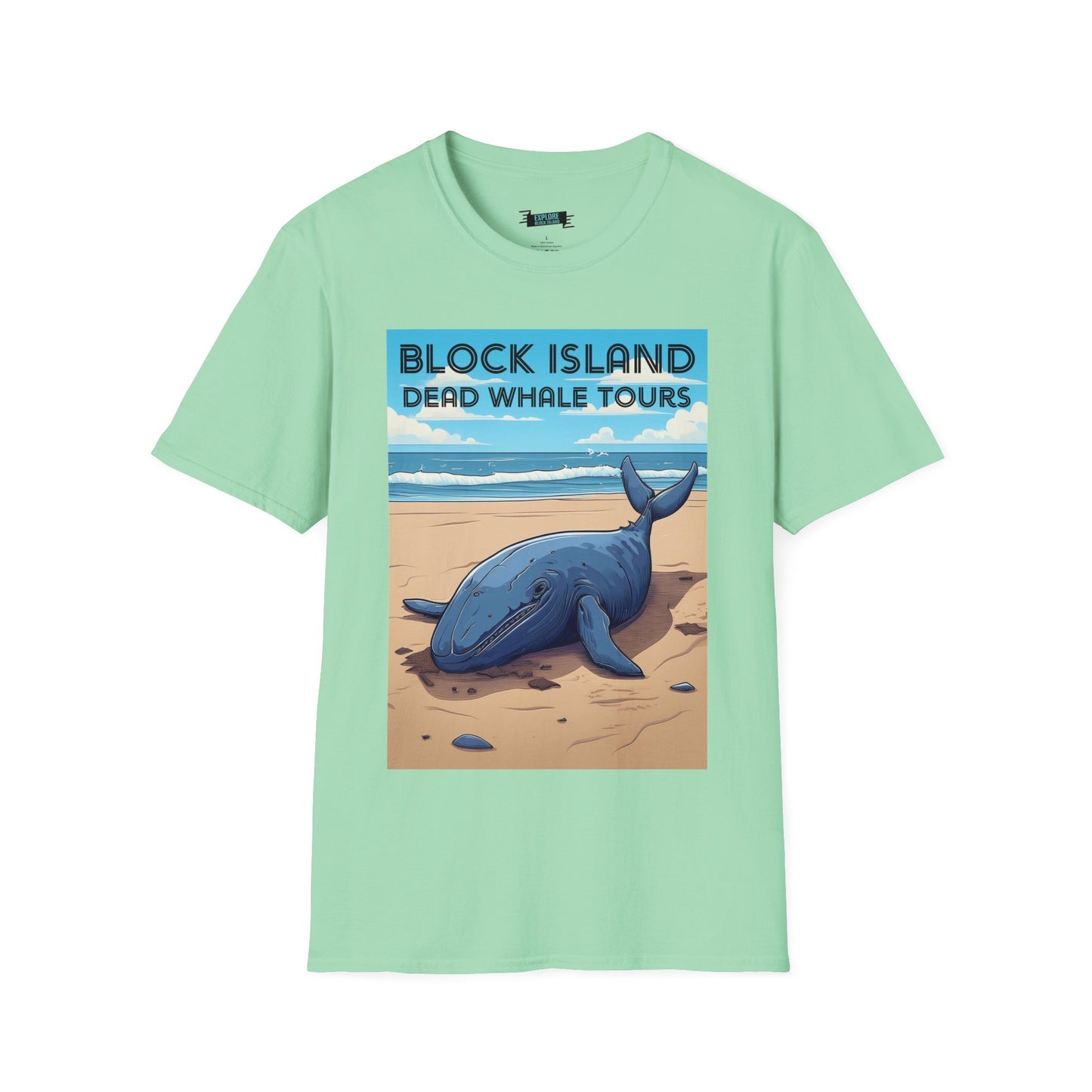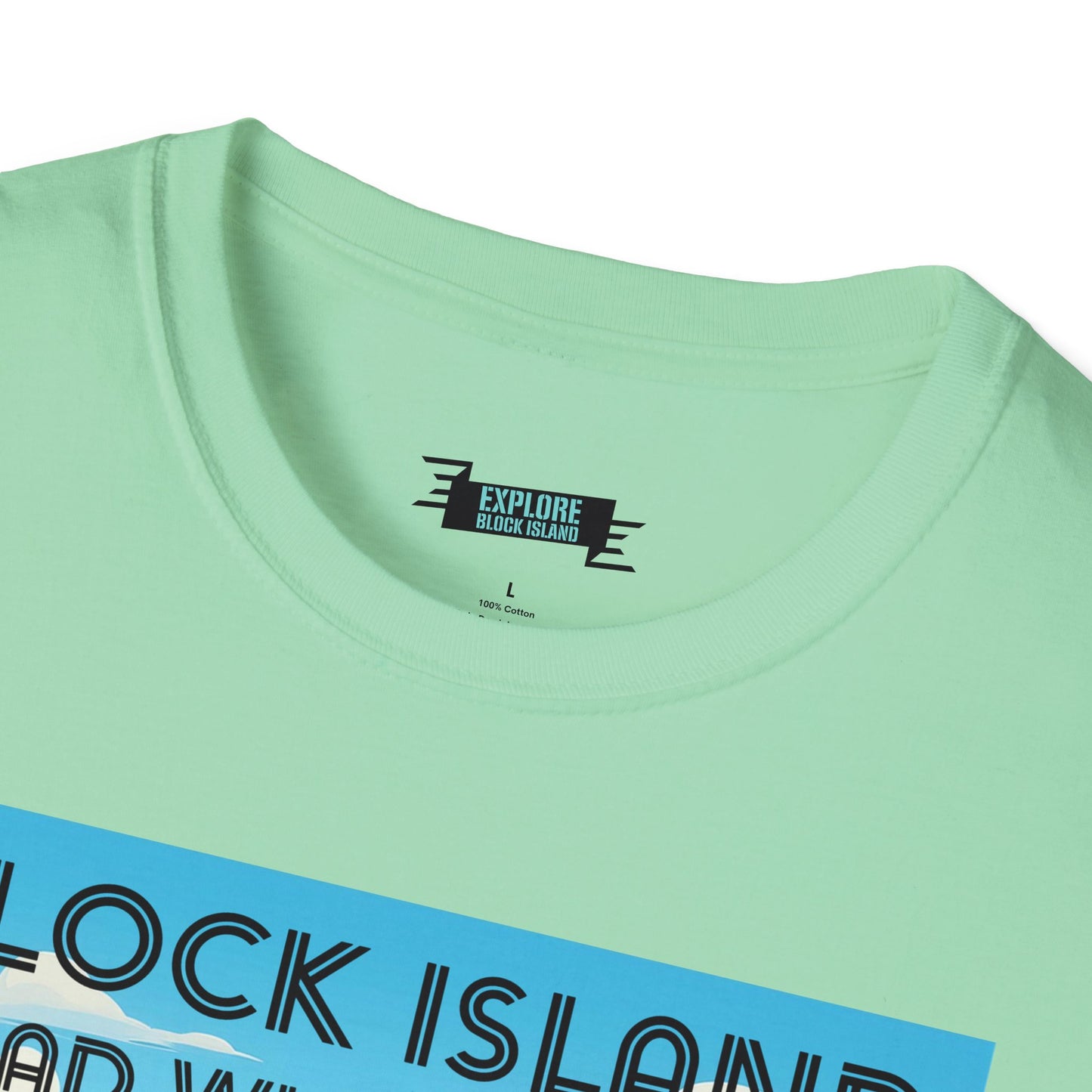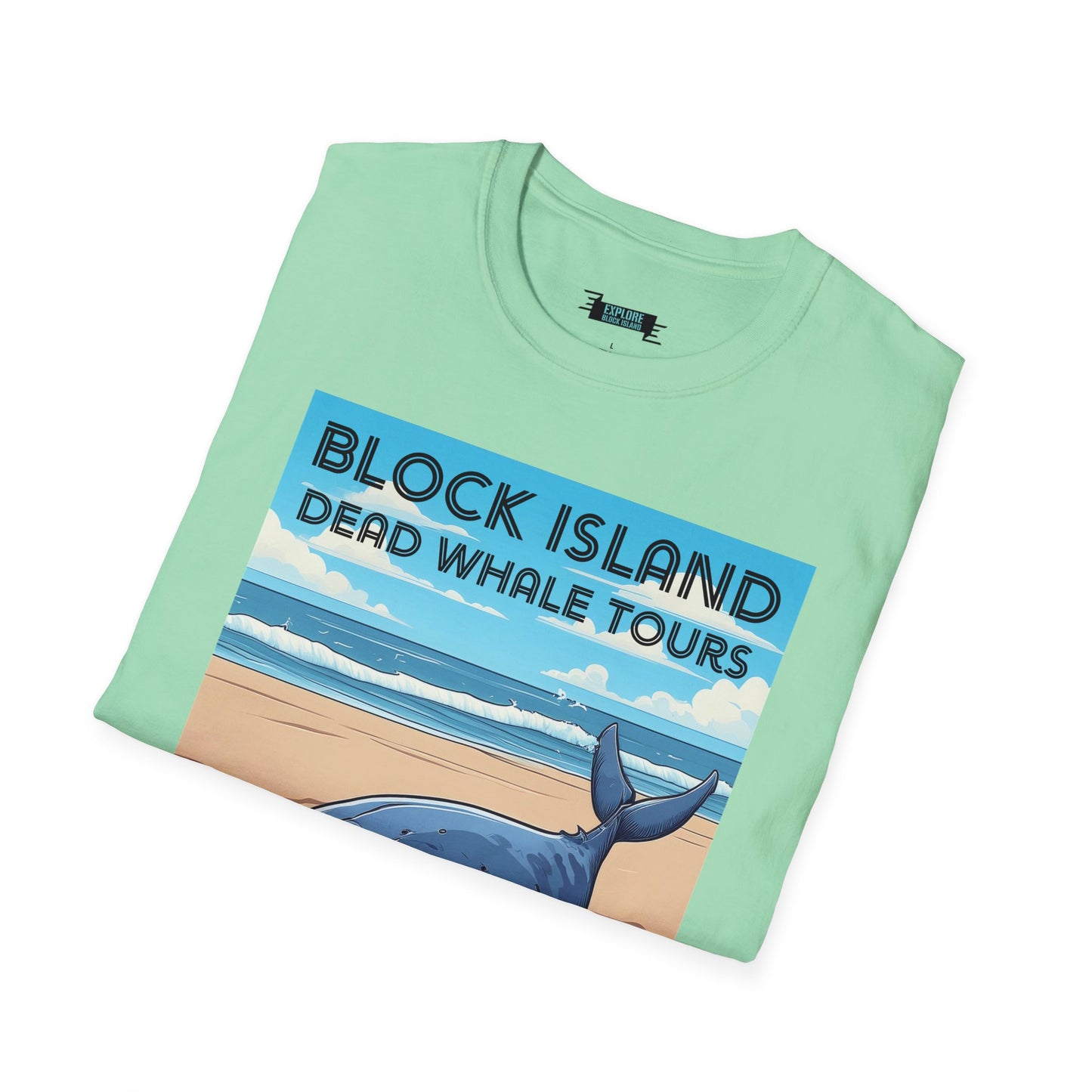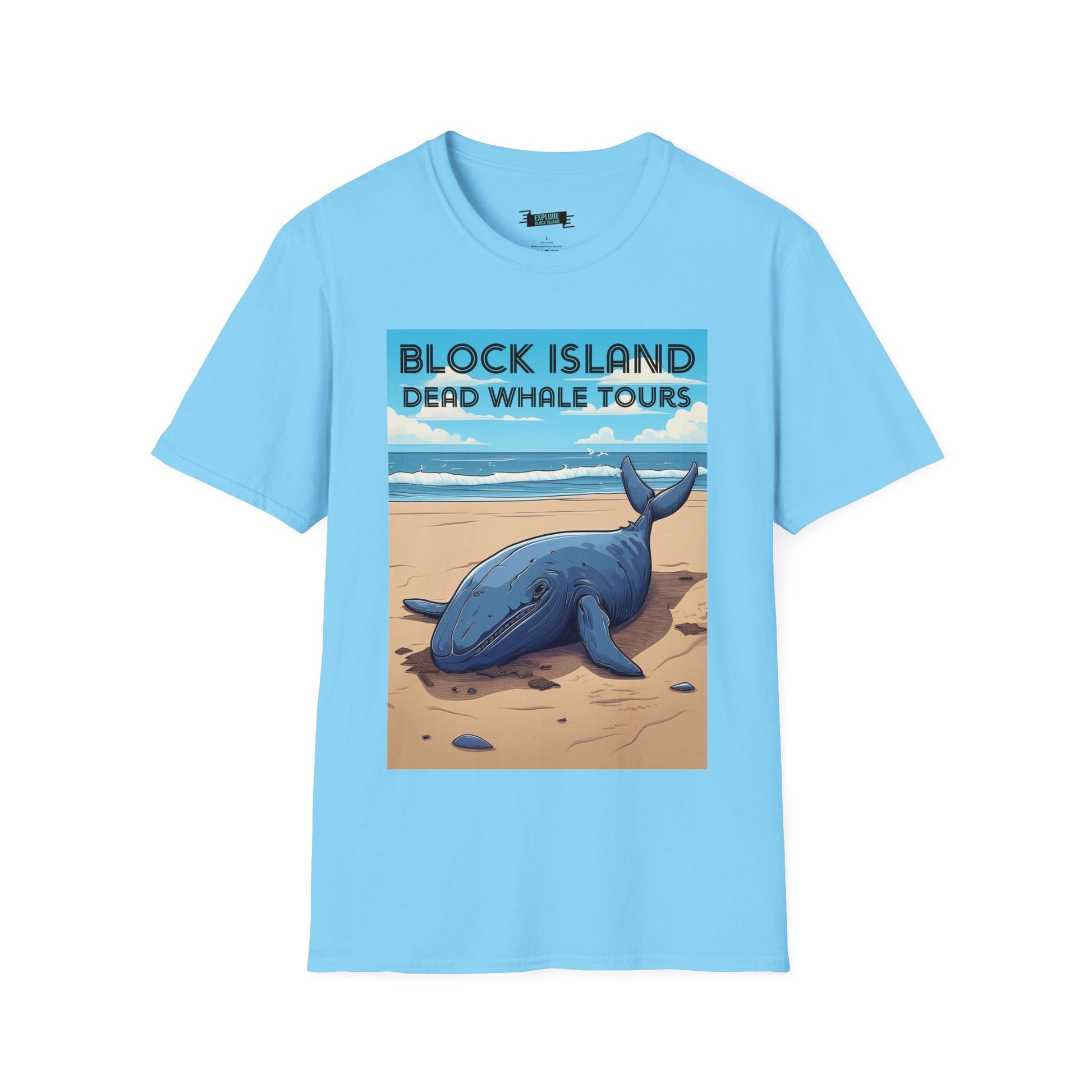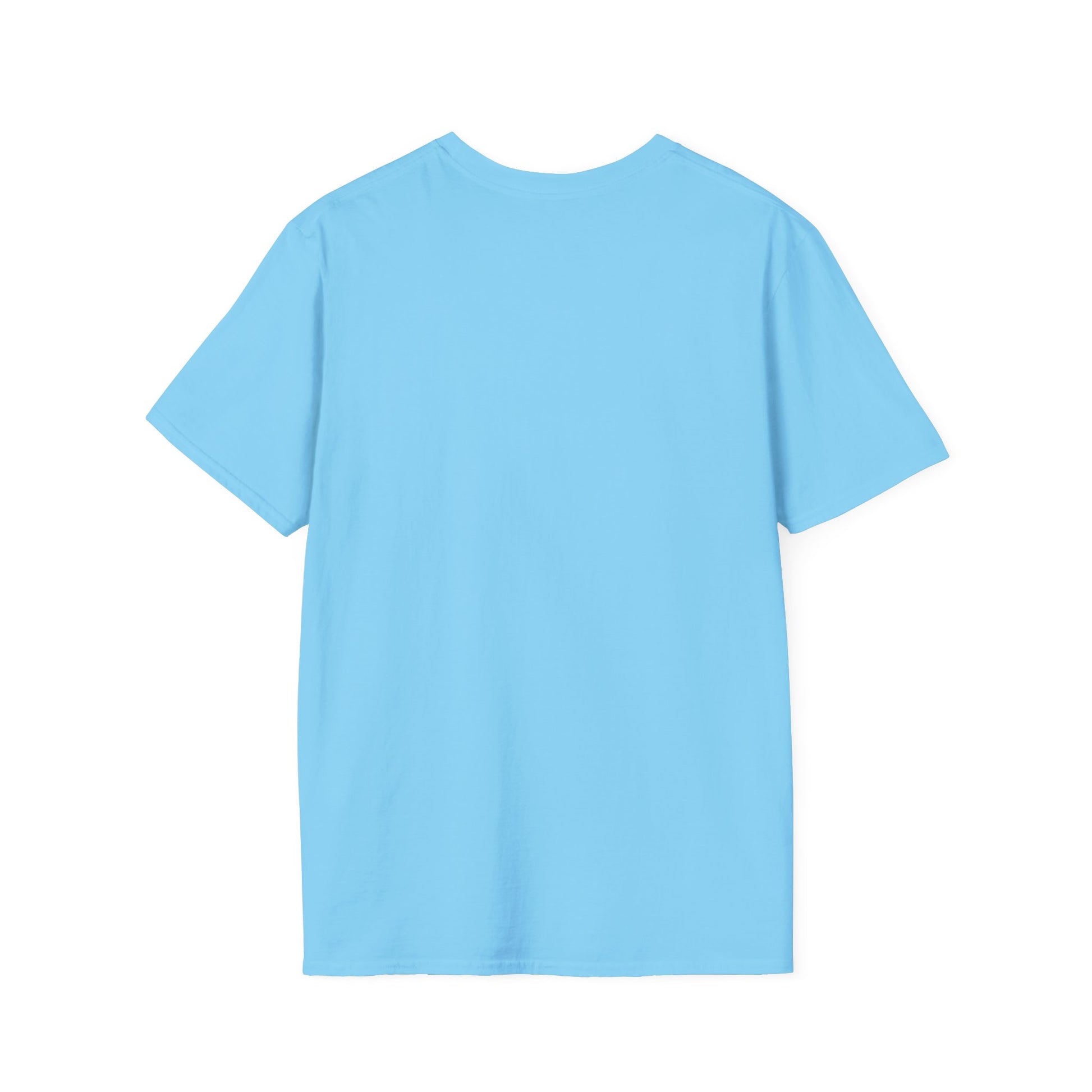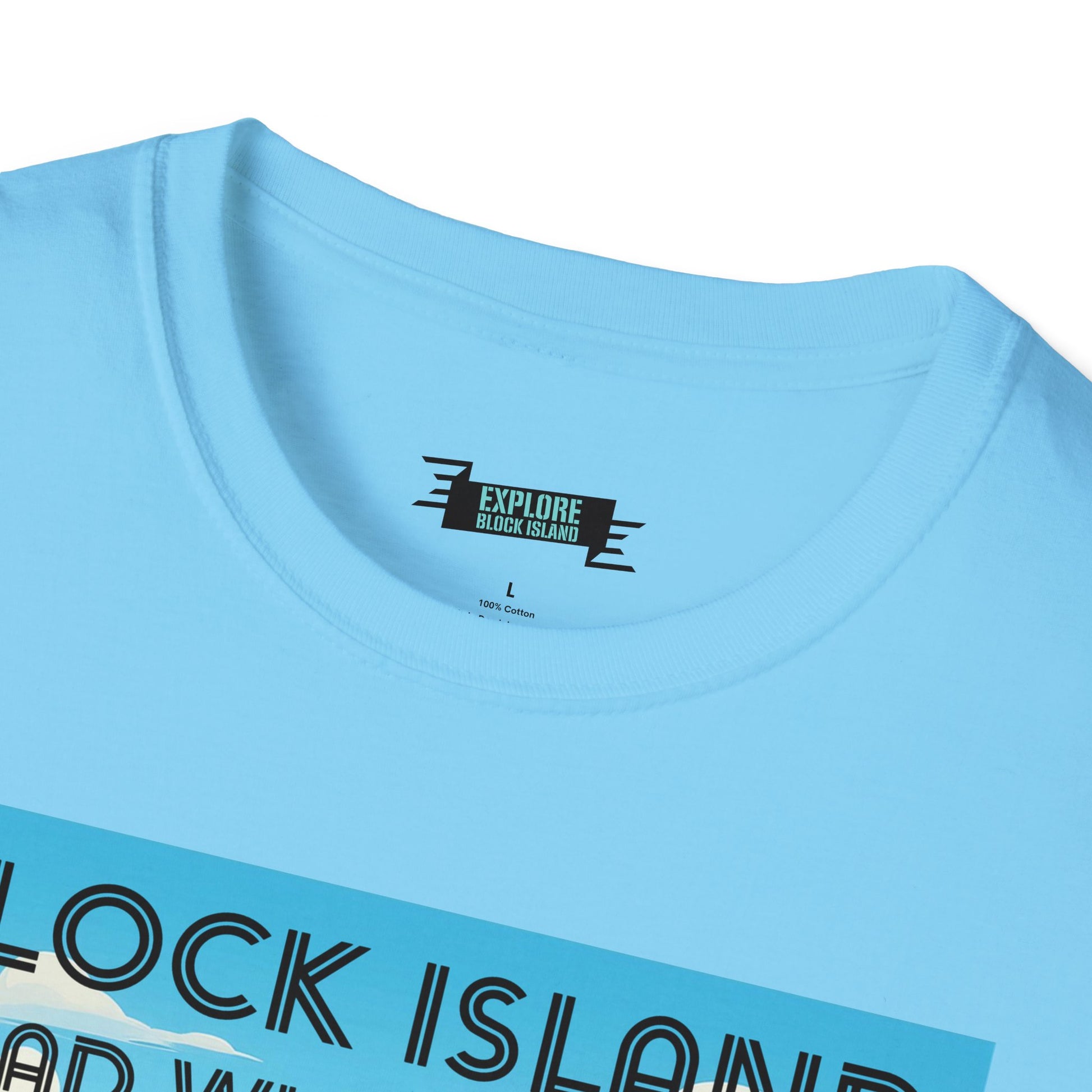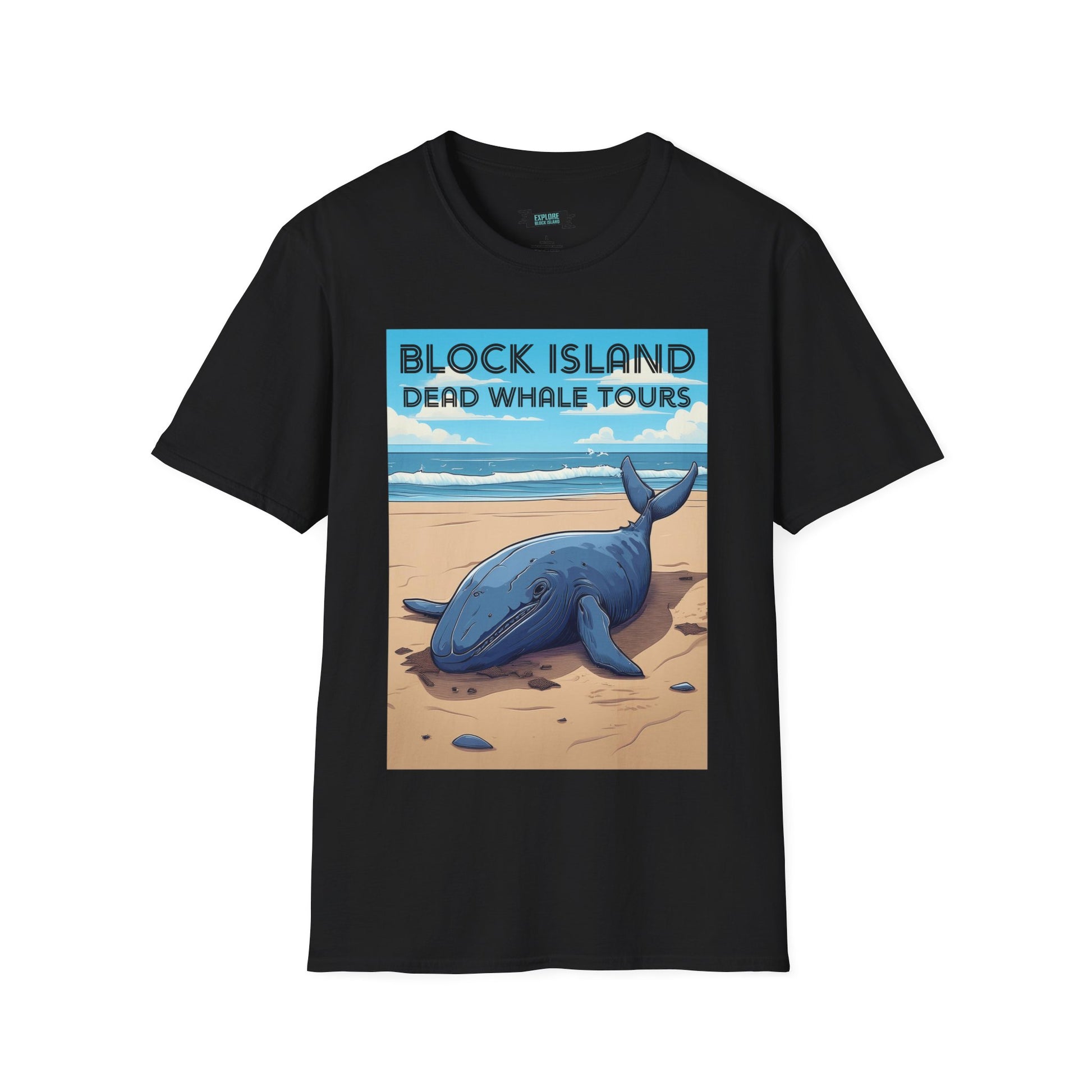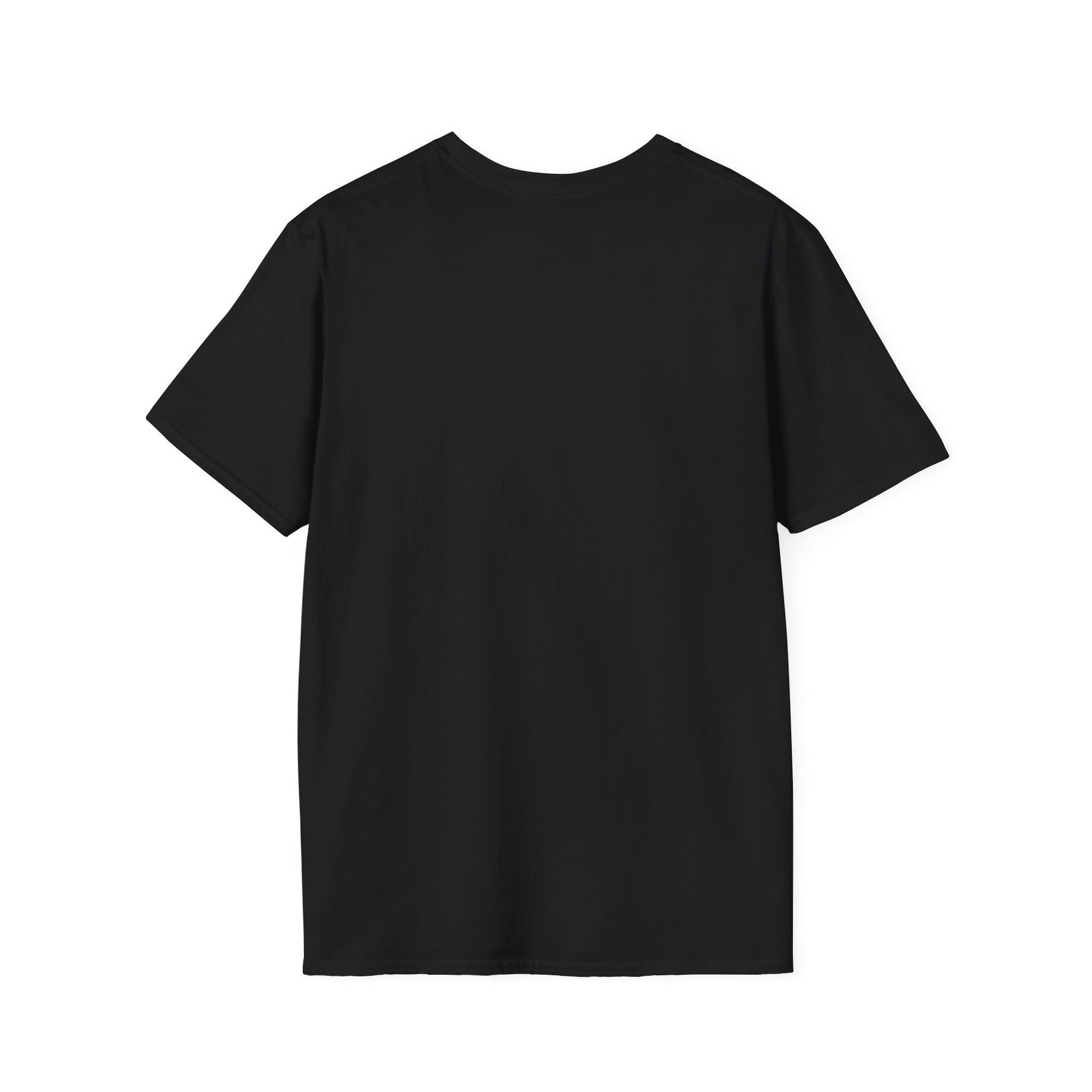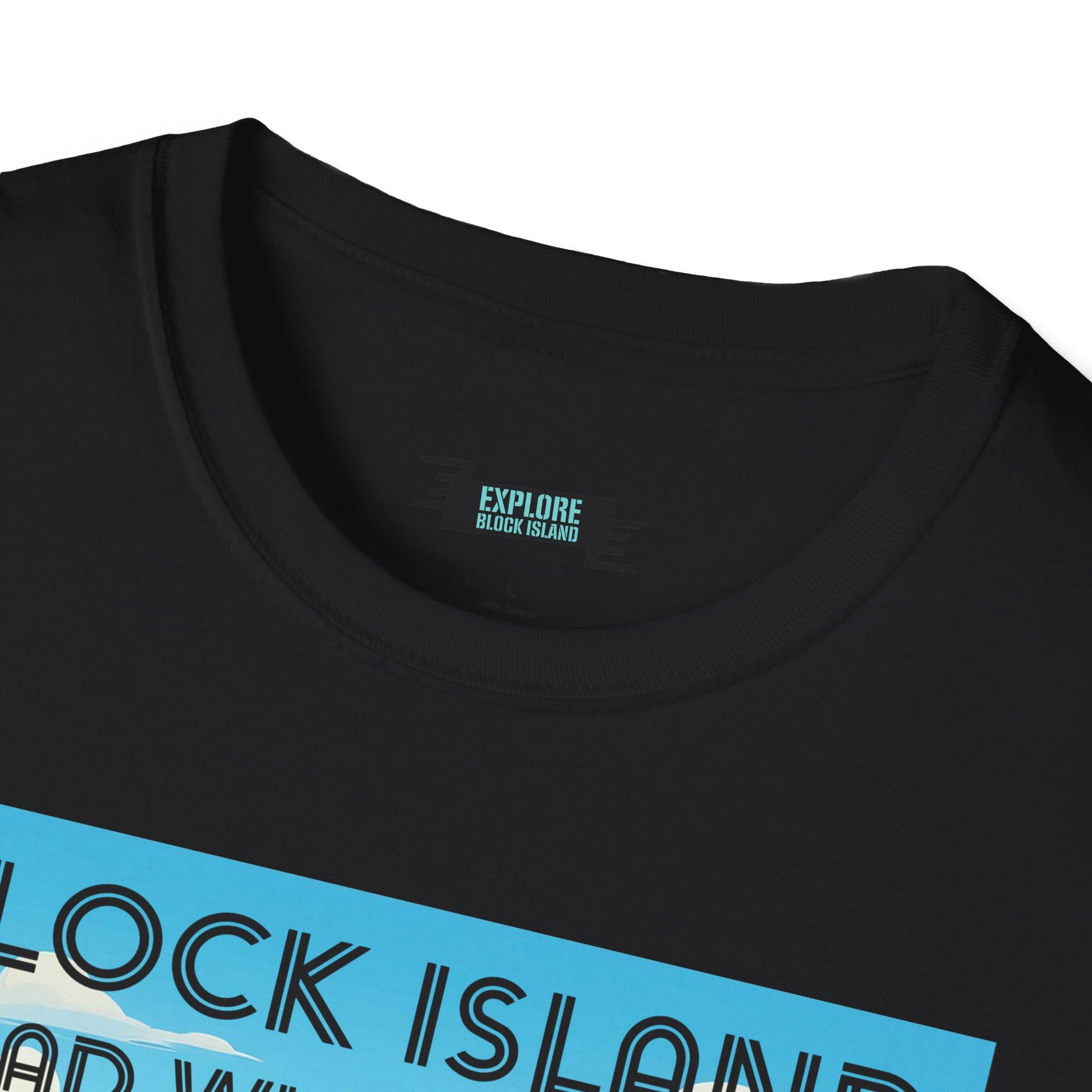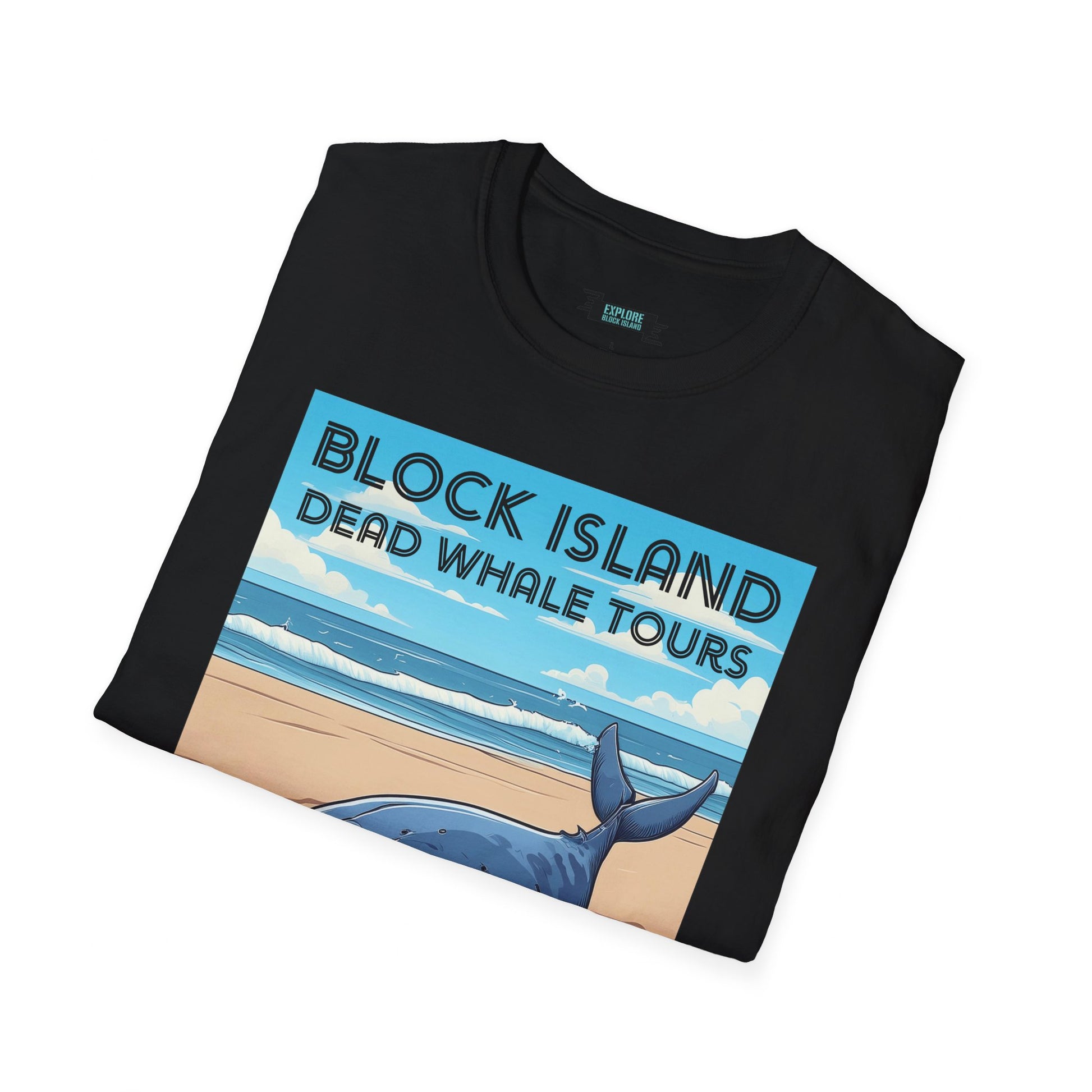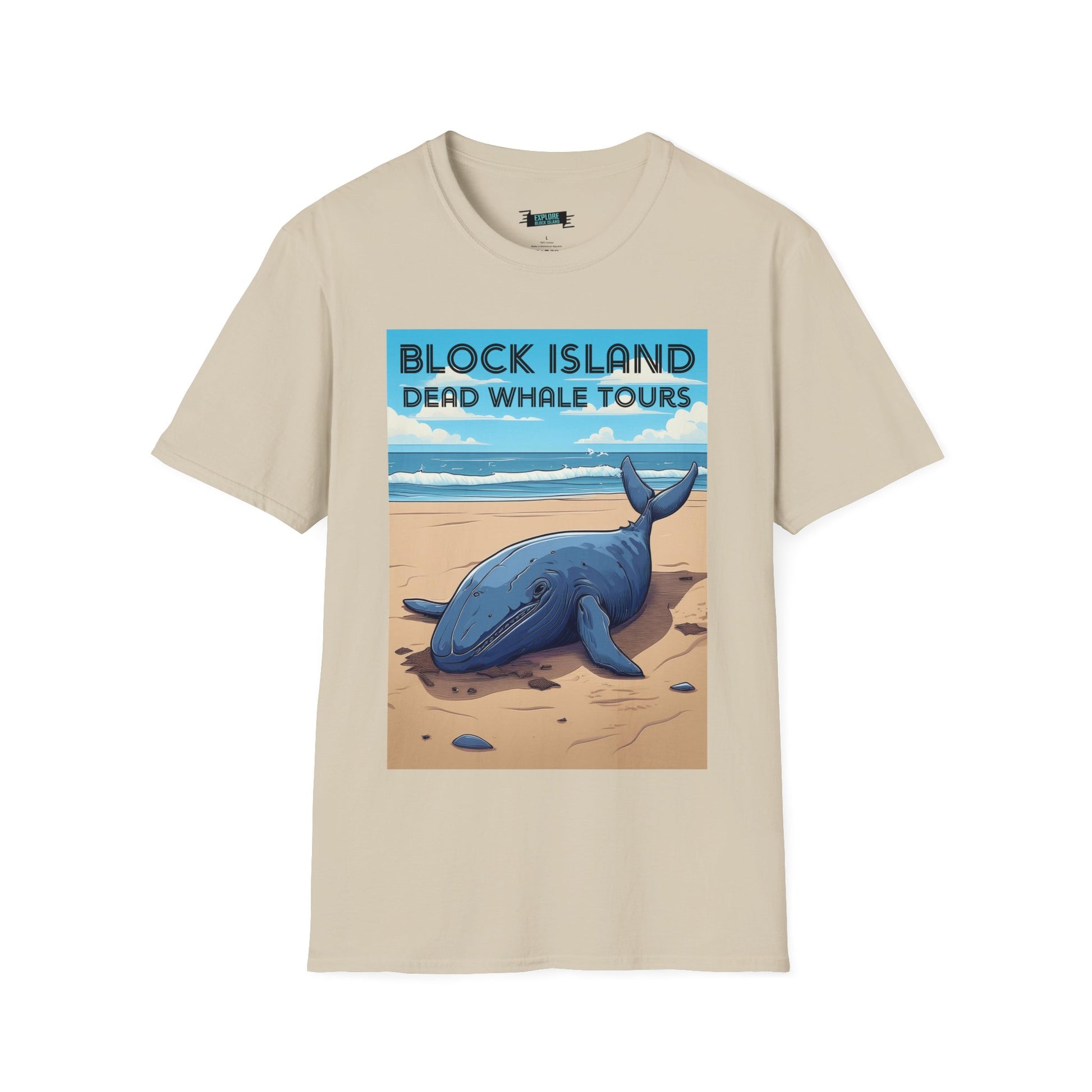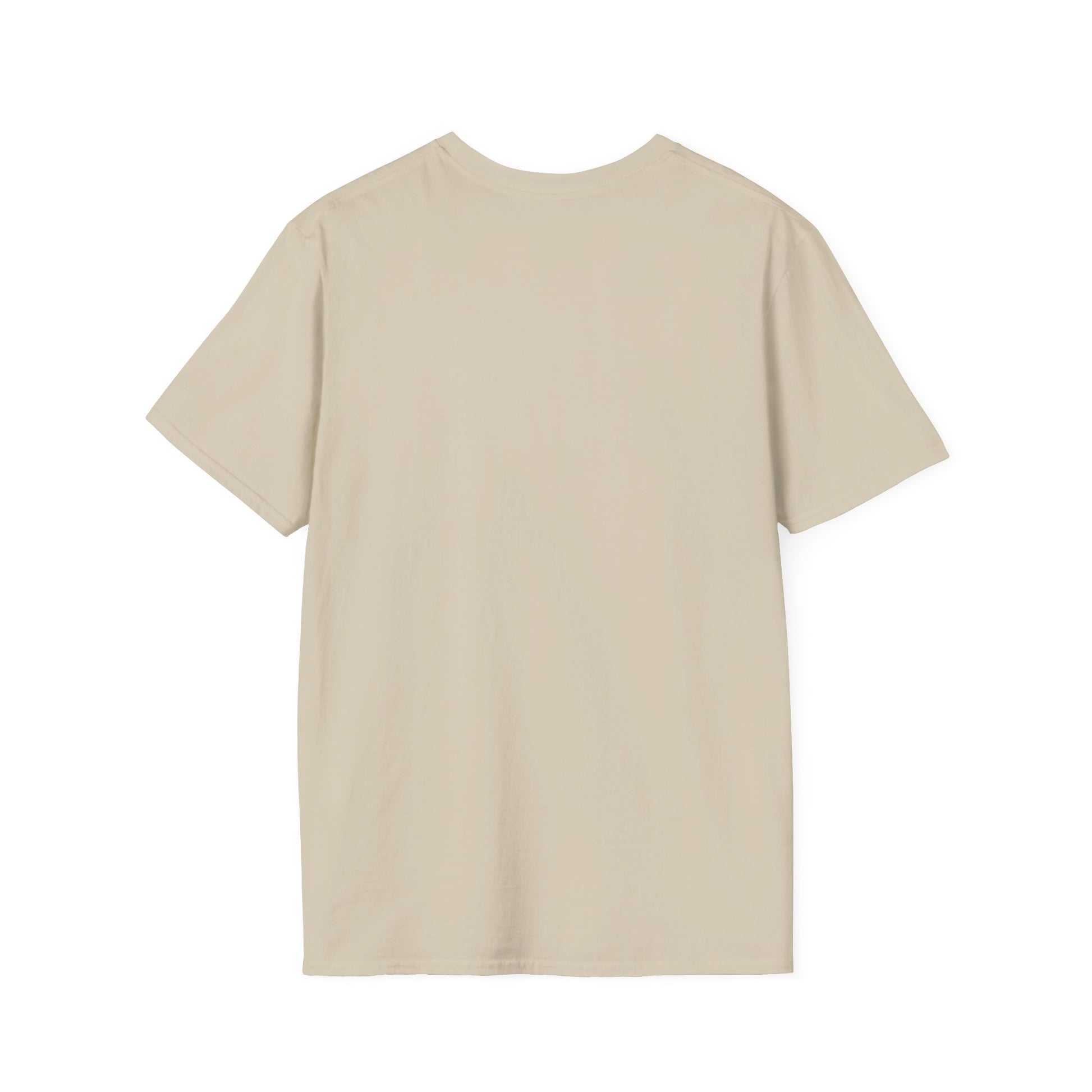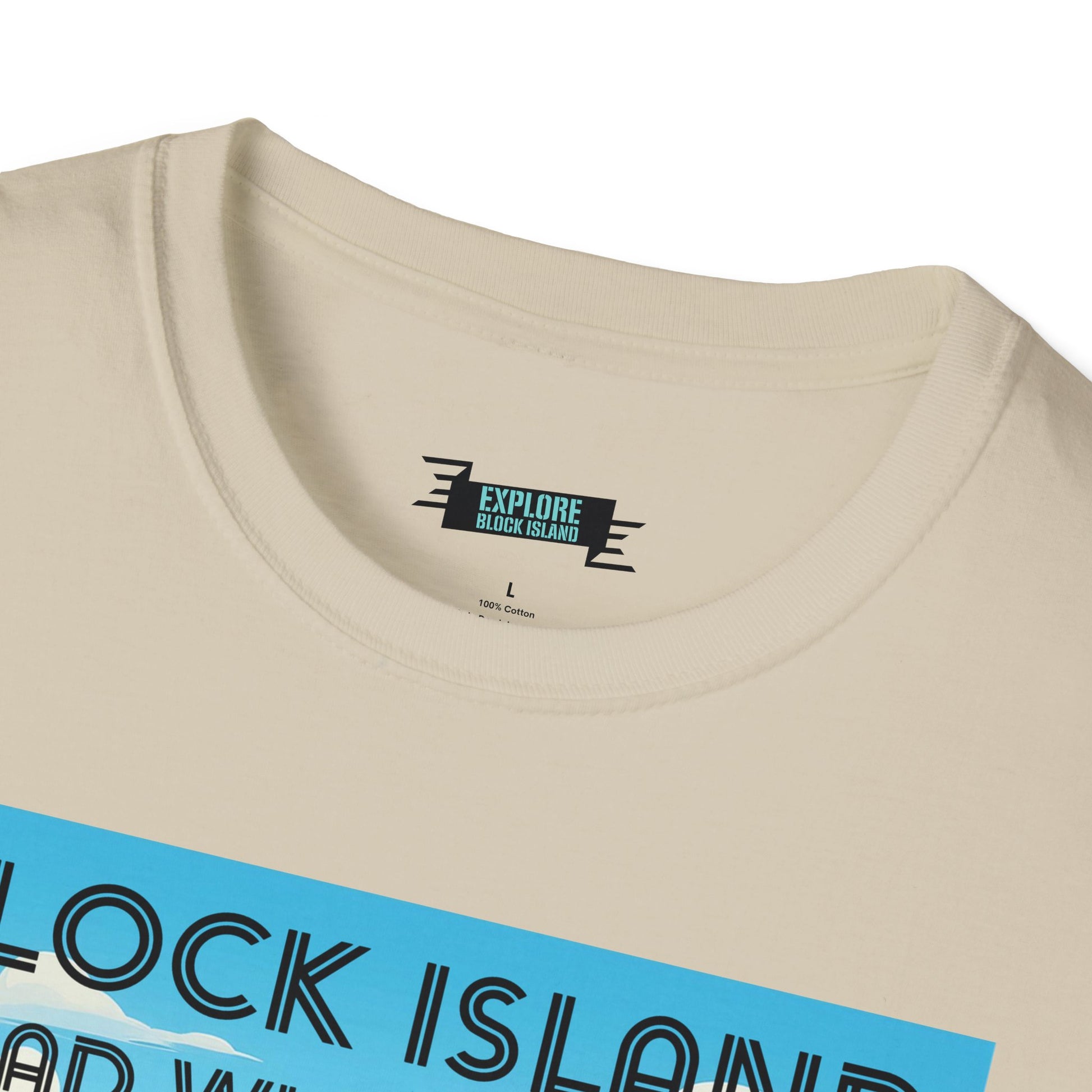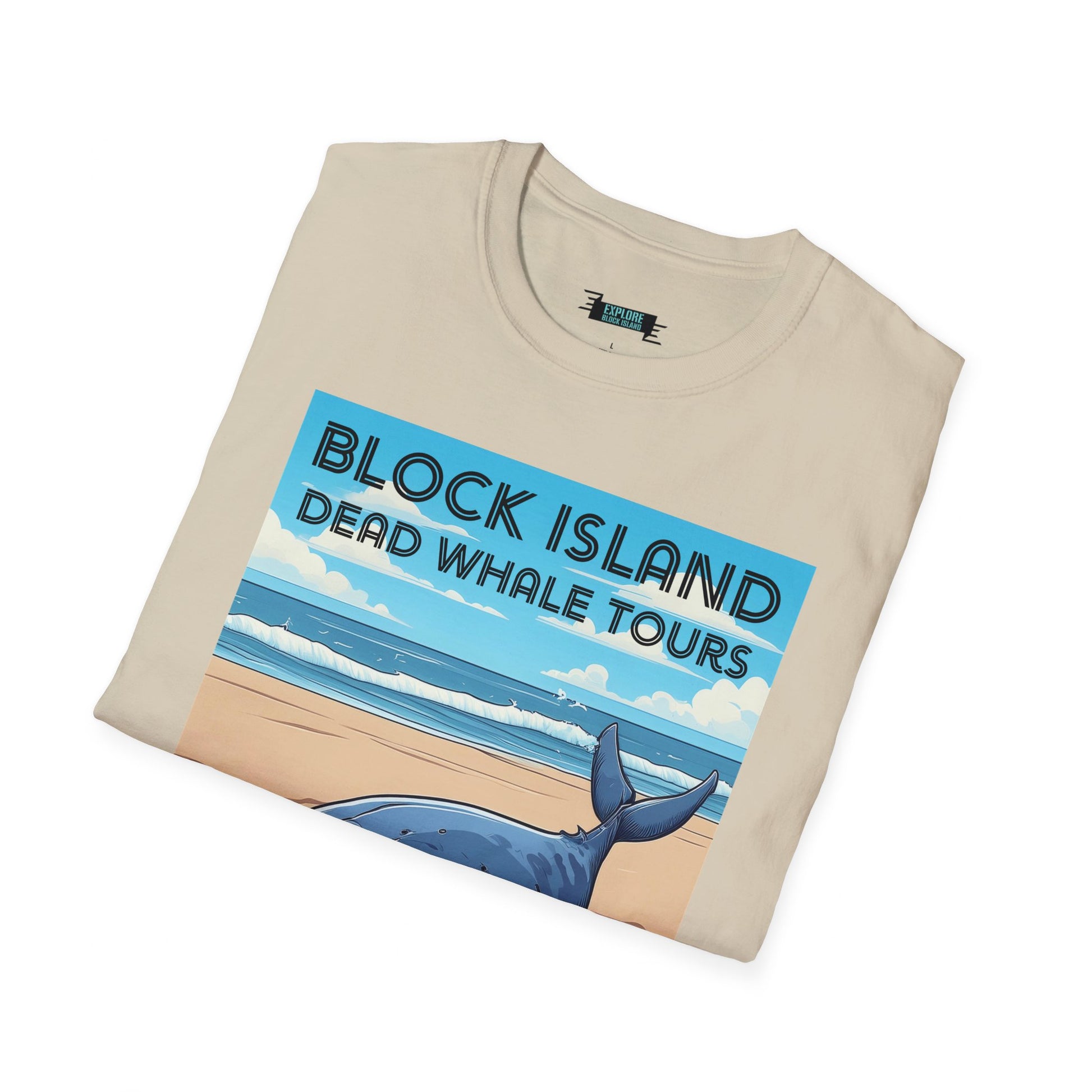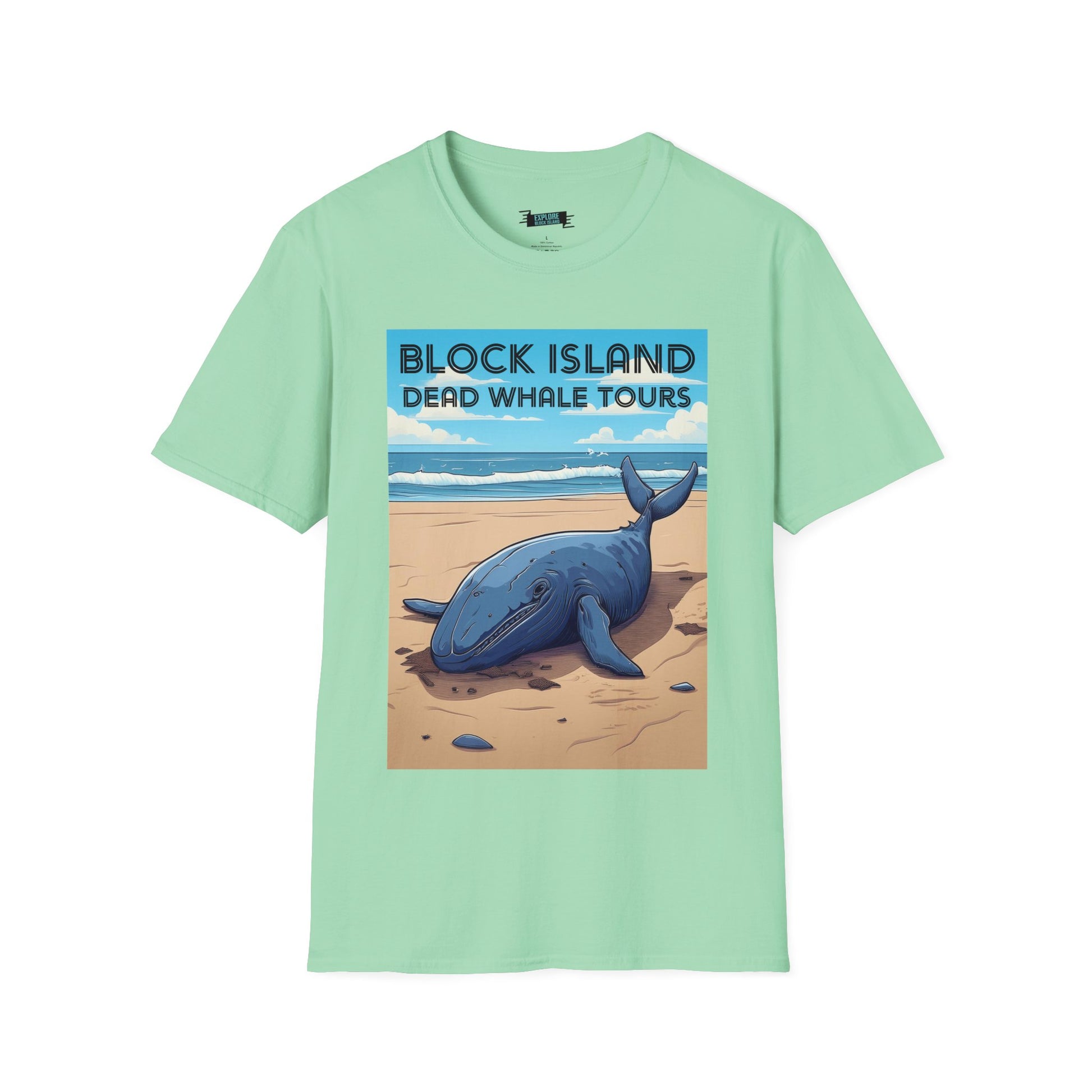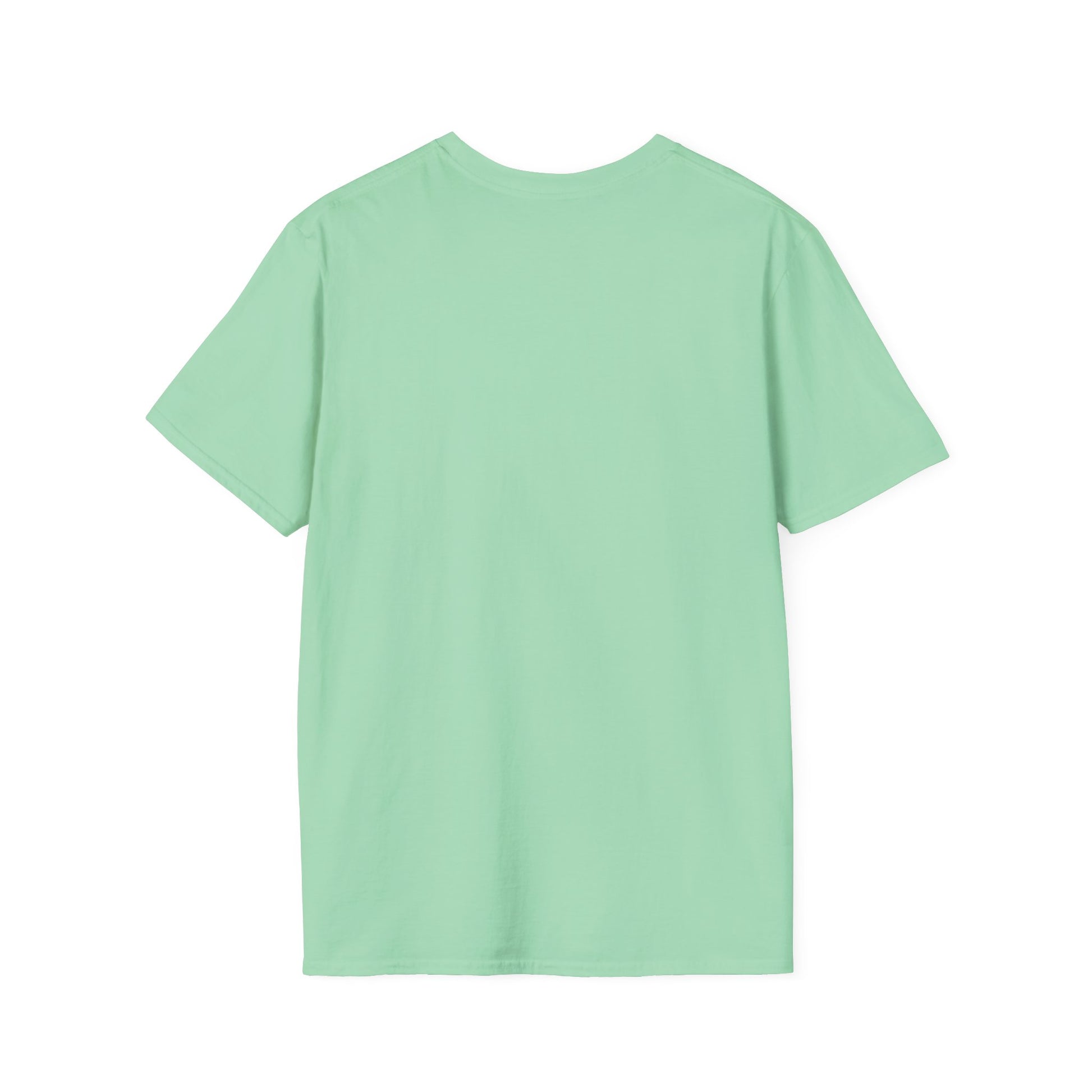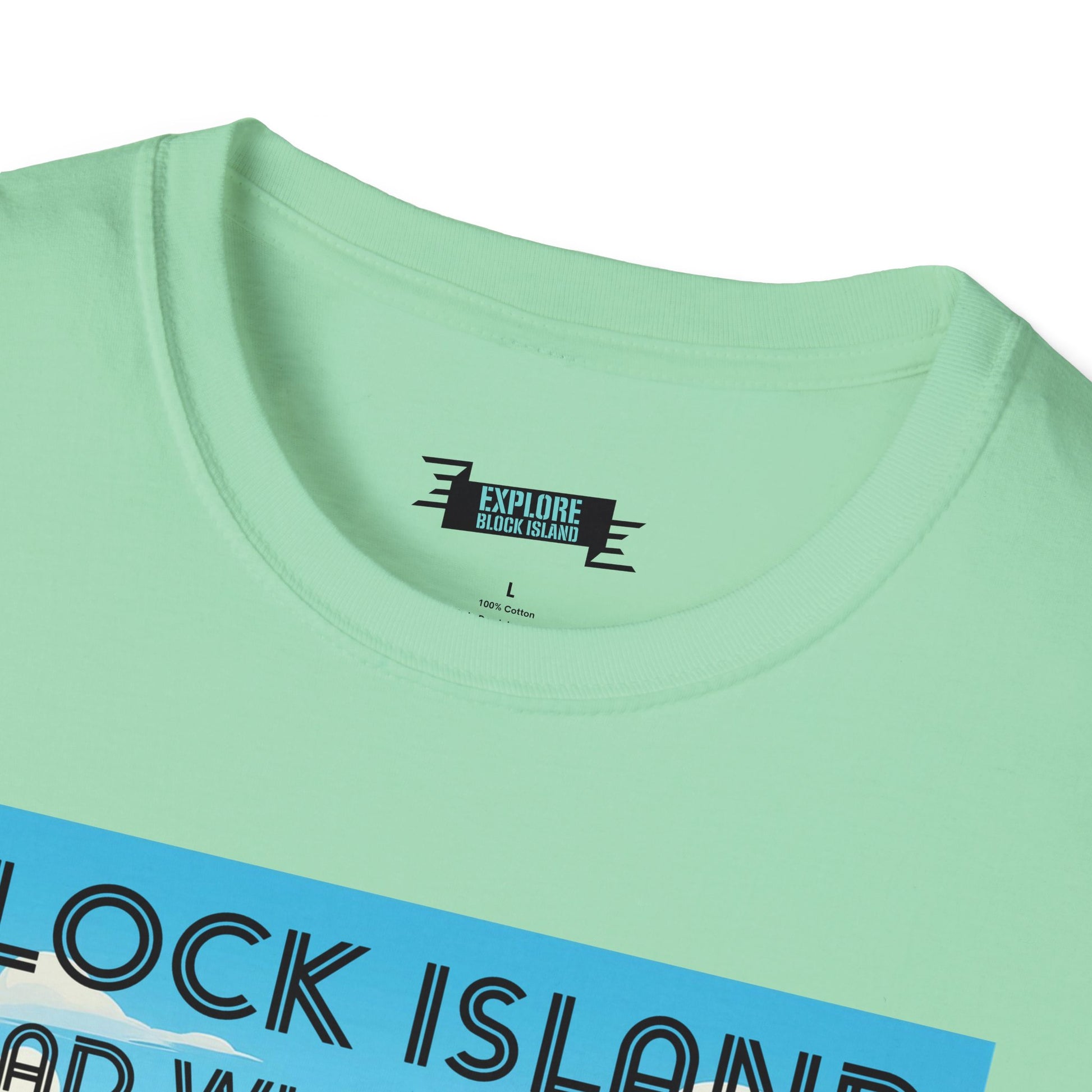Dead Whale Tours Tee
Dead Whale Tours Tee
Couldn't load pickup availability
Block Island Dead Whale Tours
**Introduction:**
"Welcome to Block Island Dead Whale Tours! My name is Chase Medeiros, and I'll be your guide for the next hour as we explore the fascinating and sometimes sobering history of whales that have washed ashore on Block Island's beaches. Today, we'll visit five sites where these majestic creatures have been found over the years, learn about the different types of whales, their migration patterns, and the causes of their deaths, both natural and man-made. Let's begin our journey!"
**Stop 1: Mansion Beach (2017)**
"Here we are at our first site, Mansion Beach. In 2017, a humpback whale was found here. Humpback whales are known for their impressive size and distinctive hump, which is how they got their name. These whales can grow up to 60 feet long and weigh around 40 tons. Humpbacks are famous for their complex songs, which can last for hours and are believed to play a role in communication and mating.
Humpback whales undertake one of the longest migrations of any mammal, traveling up to 16,000 miles round trip from their feeding grounds in polar regions to their breeding grounds in tropical and subtropical waters. They primarily feed on small fish and krill, using a technique called bubble net feeding, where they create a 'net' of bubbles to corral and capture their prey.
Unfortunately, this whale's death was attributed to entanglement in fishing gear, a common issue that affects many marine animals. Fishing lines and nets can wrap around a whale's body, making it difficult to swim and feed, eventually leading to exhaustion and death."
**Stop 2: Town Beach (2021)**
"Our next stop takes us to Town Beach, where a fin whale was discovered in 2021. Fin whales are the second largest whale species, reaching lengths of up to 85 feet and weights of up to 80 tons. They are incredibly fast swimmers, earning them the nickname 'greyhounds of the sea,' capable of speeds up to 23 mph.
Fin whales have a distinctive asymmetrical coloration on their jaw, with the right side being white and the left side dark. This unique feature aids them in hunting their prey, which consists mainly of small schooling fish, squid, and krill. They use their massive baleen plates to filter feed, taking in large amounts of water and prey and then expelling the water while retaining the food.
This particular whale died from a ship strike, highlighting the dangers posed by busy shipping lanes intersecting with whale migration routes. Ship strikes are a significant threat to fin whales, as their long migration paths often cross heavily trafficked ocean areas."
**Stop 3: Andy’s Way (2023)**
"At this site, a minke whale washed ashore in 2023. Minke whales are among the smallest of the baleen whales, typically reaching lengths of 23 to 35 feet and weighing between 6 and 10 tons. They are found in both the Northern and Southern Hemispheres and are the most abundant baleen whale species.
Minke whales have a varied diet that includes krill, small schooling fish, and plankton. They are known for their curious nature and often approach boats, which makes them popular among whale watchers.
This whale was believed to have died from natural causes, possibly old age or disease. Minke whales have a lifespan of up to 50 years. They are solitary creatures, often traveling alone or in small groups, and have a wide distribution, from the tropics to polar waters."
**Stop 4: Grace’s Cove (2019)**
"Here at Grace’s Cove, a right whale was found in 2019. Right whales were named by whalers as the 'right' whales to hunt because they float when dead and have a lot of blubber. They are among the most endangered of the large whales, with fewer than 400 individuals remaining in the North Atlantic population.
Right whales can grow up to 55 feet long and weigh up to 70 tons. They are slow swimmers, which unfortunately makes them more vulnerable to ship strikes and entanglement in fishing gear. Their diet primarily consists of copepods and other small invertebrates, which they feed on by skimming through the water with their mouths open.
This whale's death served as a stark reminder of the ongoing challenges these species face. Conservation efforts are crucial to protect these gentle giants, and measures such as modifying shipping lanes and improving fishing gear can help reduce human impact on their populations."
**Stop 5: Dorie’s Cove (2024)**
"Our final stop is Dorie’s Cove, where a humpback whale has recently washed ashore in 2024. This is an incredible opportunity to see a whale up close. Humpback whales are easily recognizable by their long pectoral fins, knobby head, and distinctive tail flukes. They are known for their acrobatic displays, including breaching and tail-slapping.
Humpback whales migrate annually from their feeding grounds in cold, nutrient-rich polar waters to warmer breeding grounds. During the feeding season, they consume vast amounts of small fish and krill, storing energy for the breeding season when they eat very little.
Please observe the whale from a safe distance and use the protective gear provided to avoid any health risks. This whale's cause of death is still under investigation, but it highlights the importance of ongoing research and conservation efforts to protect these magnificent creatures."
**Conservation Message:**
"As we conclude our tour, it's important to reflect on what we've learned. Whales play a crucial role in our marine ecosystem, but they face numerous threats from human activities. Pollution, climate change, ship strikes, and entanglement in fishing gear are just a few of the challenges they encounter. Conservation efforts are vital to ensure these magnificent creatures continue to thrive. By supporting organizations dedicated to marine conservation and being mindful of our own impact on the ocean, we can all contribute to the protection of these incredible animals. Thank you for joining us today on Block Island Dead Whale Tours. We hope this experience has been both educational and inspiring."
**Closing:**
"Thank you for being a part of our tour. If you have any questions or would like more information about whale conservation, please don't hesitate to ask. Have a wonderful day, and we hope to see you again soon!"
.: Runs true to size
